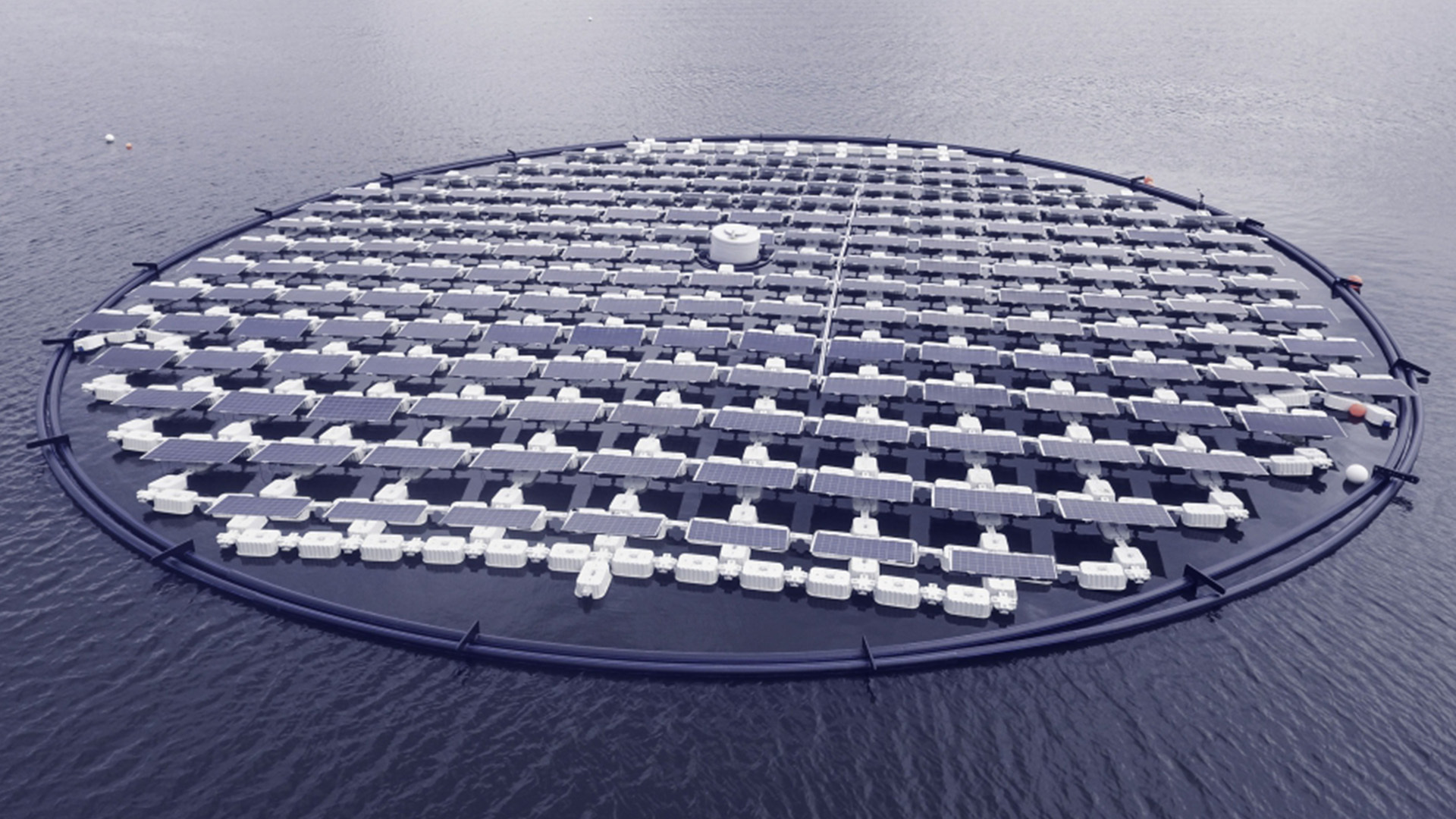
[JACK AYLMER]
SOLAR PANELS really shine – when they’re under direct sunlight. It seems obvious – but when the weather is cloudy –
ON AVERAGE THE TECHNOLOGY CAN ONLY GENERATE AROUND 10 TO 25 PERCENT OF ITS MAXIMUM CAPACITY.
so WHAT IF SOLAR PANELS COULD FOLLOW THE SUNLIGHT INSTEAD OF JUST WAITING AROUND FOR IDEAL CONDITIONS.
THAT’S EXACTLY WHAT one PORTUGUESE COMPANY IS TRYING TO MAKE POSSIBLE.
SolarisFloat is developing WHAT IS ESSENTIALLY A FLOATING ISLAND OF SOLAR PANELS.
EQUIPPED WITH ELECTRIC ENGINES – the island can actually FOLLOW THE SUN’S RAYS, and FEATURES AN ARRAY OF DIFFERENT AXIS DESIGNS FOR ITS PANELS.
THIS ALLOWS THEM TO BE ANGLED IN A VARIETY OF DIRECTIONS TO BEST CAPTURE SUNLIGHT.
THESE FEATURES ONLY TAKE UP ABOUT HALF A PERCENT OF THE TOTAL ENERGY ITS SOLAR PANELS PRODUCE.
THE energy solutions COMPANY SAYS THE SHADOWS CREATED ON THE WATER BY THIS TECHNOLOGY CAN REDUCE EVAPORATION BY AS MUCH AS 60 PERCENT AND CUT DOWN ON THE AMOUNT OF HARMFUL ALGAE.
[ANTONIO DUARTE]
“To be sustainable, you have to be responsible. When you have for example, a lake like this, if you don’t spoil the lake himself, life will continue on the lake. And you can, you can share the big part of the water with people and with the environment, but you can produce also energy..”
[JACK AYLMER]
ONE OF THESE FLOATING SOLAR FARMS has already been installed IN THE NETHERLANDS.
IT MEASURES OVER 15 AND A HALF THOUSAND SQUARE FEET, CLOSE TO THE SIZE OF AN N-H-L HOCKEY RINK.
[GFX 10 HOMES BEING POWERED BY FLOATING SOLAR FARM]
THE PANELS CAN GENERATE A TOTAL OF 73 KILOWATTS AT PEAK POWER, ABOUT ENOUGH ELECTRICITY TO KEEP AN AVERAGE SUBURBAN NEIGHBORHOOD RUNNING.
[ANCHOR]
IT’S A LOT OF SPACE FOR A LIMITED RETURN, BUT EXPERTS BELIEVE THEY’RE JUST SCRATCHING THE SURFACE WITH THIS TECHNOLOGY.
[SOT]
[SOLARISFLOAT pilot project with TNO in Westvoorne.mp4]
(2:33-2:47)
“More people will will know that the floating solar exists. And so I believe that this is very, very important to to happen those projects, and now it’s an opportunity and we have to take those opportunities to show the world that things can change and things are possible.” –Antonio Duarte, SolarisFloat lead technical engineer
RESEARCHERS AT THE SOLAR ENERGY RESEARCH INSTITUTE OF SINGAPORE say COVERING JUST 10 PERCENT OF ALL MAN-MADE RESERVOIRS IN THE WORLD WITH THIS TECH WOULD RESULT IN AN INSTALLED CAPACITY OF 20 TERAWATTS
TO PUT THAT INTO PERSPECTIVE, THE ENTIRE PLANET CONSUMES ABOUT 18 TERRAWATTS EVERY YEAR.
FLOATING SOLAR FARMS ARE ALSO BEING PRAISED BY GREEN ENERGY ADVOCATES AS A WAY TO LIMIT THE OFTEN VAST AMOUNTS OF LAND THEY WOULD OTHERWISE OCCUPY.
THESE AREAS OFTEN GREATLY EXCEED THE SPACE NEEDED TO PRODUCE EQUIVALENT POWER FROM NON-RENEWABLE ENERGY SOURCES.
[GFX SHOWING 45 SOLAR FARMS EQUALING ONE COAL PLANT]
SOLAR FARMS REQUIRE up to 45 TIMES MORE LAND THAN COAL PLANTS TO CREATE THE SAME AMOUNT OF ENERGY ACCORDING TO INTERESTING ENGINEERING.
[GFX SHOWING 45 SOLAR FARMS EQUALING ONE FOSSIL FUEL POWER STATION]
AS MUCH AS 100 TIMES MORE LAND IS NEEDED FOR A SOLAR FARM TO EQUAL A FOSSIL FUEL POWER STATION’S ENERGY OUTPUT.
ANALYSTS BELIEVE THESE SPACE REQUIREMENTS FOR INSTALLATION WILL LEAD TO MANY MORE FLOATING SOLAR FARMS IN THE FUTURE.
CREATING AN INDUSTRY THAT WILL BE WORTH TENS OF BILLIONS BY THE END OF THE DECADE.







